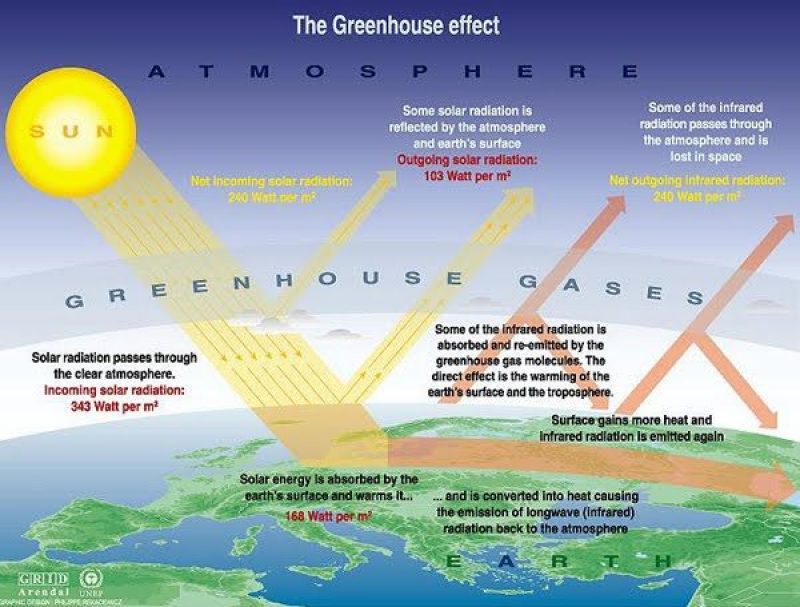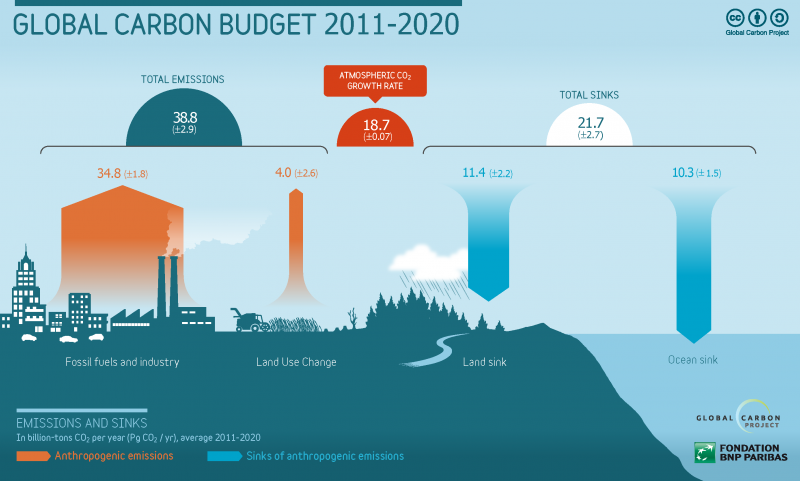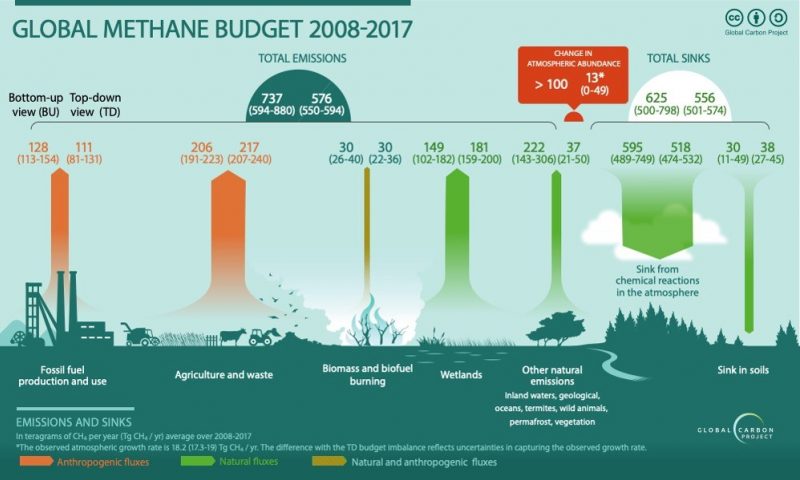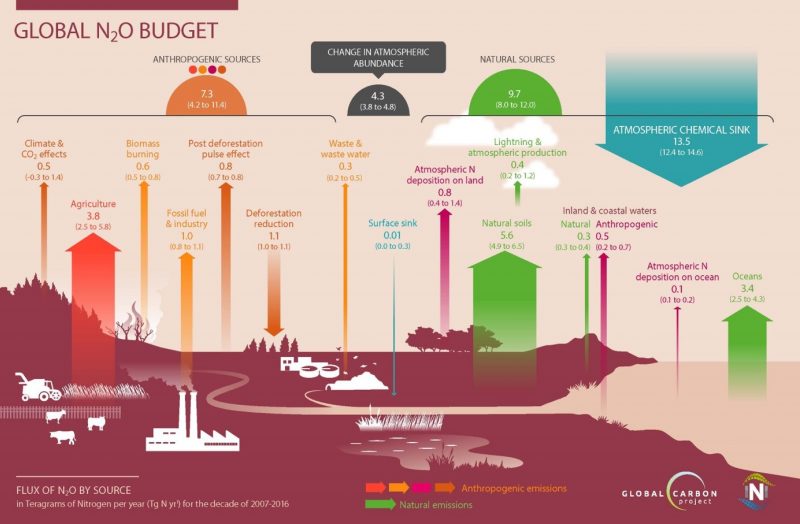Climate Change
A detailed explainer for veterinary professionals
Vet Sustain
What is climate change?
The Earth’s climate has changed throughout history. Most of these climate changes are attributed to very small variations in the way the earth orbits the sun and the amount of solar energy our planet receives. However, in the last century, and particularly since the 1950’s, there has been a dramatic increase in global temperatures. This increase is known as global warming.
According to the 2020 State of the Climate Report by the World Meteorological Organisation (WMO, 2020), 2020 was one of the three warmest years on record, despite a cooling La Niña event. The global average temperature was about 1.2° Celsius above the pre-industrial (1850-1900) level. 2011-2020 was also the warmest decade on record.
This video illustrates how drastically temperatures in each of the world’s 191 countries have changed over the last century.
What causes climate change?
The global warming trend observed since the mid-20th century is attributed to human activities, which have enhanced the "greenhouse effect" — warming that results when the atmosphere traps heat radiating from Earth toward space.

Figure 1: The greenhouse effect (UNEP 2015)
Certain gases in the atmosphere block heat from escaping, and these are termed greenhouse gases (GHGs). There are natural sources and sinks of these GHGs, but human activities have dramatically increased concentrations of the gases in the atmosphere over a very short space of time. The main GHGs from human activities responsible for global warming are carbon dioxide, methane and nitrous oxide.
Carbon dioxide (CO₂) is the single most important greenhouse gas causing human-induced global warming. Although other GHGs are more powerful per molecule in warming the planet than CO₂, the sheer volume of CO₂ emissions from human activities and the fact that some of the emissions persist in the atmosphere for hundreds to thousands of years, makes CO₂ the biggest challenge in combating climate change.
Carbon dioxide is released through human activities such as deforestation, land use changes and burning fossil fuels. Other greenhouse gases such as methane and nitrous oxide are also important drivers of global warming and are released through human activities such as agriculture, fossil fuel production and waste management.
Every year the Global Carbon Project produces budgets of the three main GHGs. Budgets are shown in Figures 2, 3 and 4.

Figure 2: Global carbon budget 2010-2019 (Friedlingstein, P. et al., 2020)

Figure 3: Global methane budget 2008-2017 (Saunois, M. et al., 2020)

Figure 4: Global nitrogen budget 2007-2016 (Tian, H. et al., 2020)
What are the impacts of Climate Change?
The Intergovernmental Panel on Climate Change (IPCC) is the UN body for assessing the science related to climate change. It was established by the United Nations Environment Programme (UNEP) and the World Meteorological Organization (WMO) in 1988 to provide policymakers with regular scientific assessments concerning climate change and its implications and potential future risks, and to put forward adaptation and mitigation strategies. It has 195 member states.
IPCC assessments provide governments, at all levels, with scientific information that they can use to develop climate policies. IPCC assessments are a key input into the international negotiations to tackle climate change. IPCC reports are drafted and reviewed in several stages, thus guaranteeing objectivity and transparency.
In August of 2021, the IPCC finalised the first part of the Sixth Assessment Report, Climate Change 2021: The Physical Science Basis 59. The report pulls together the findings from more than 14,000 peer-reviewed studies. The authors conclude that it is “unequivocal” that humans have warmed the planet, causing “widespread and rapid” changes to Earth’s oceans, ice and land surface.
The report shows that emissions of greenhouse gases from human activities are responsible for approximately 1.1°C of warming since 1850-1900, and finds that averaged over the next 20 years, global temperature is expected to reach or exceed 1.5°C of warming. For 1.5°C of global warming, there will be increasing heat waves, longer warm seasons and shorter cold seasons. At 2°C of global warming, heat extremes would more often reach critical tolerance thresholds for agriculture and health. (IPCC 2021)
Climate change is bringing multiple changes in different regions – which will all increase with further warming. These include changes to wetness and dryness, to winds, snow and ice, coastal areas and oceans. For example:
Climate change is intensifying the water cycle. This brings more intense rainfall and associated flooding, as well as more intense drought in many regions.
Climate change is affecting rainfall patterns. In high latitudes, precipitation is likely to increase, while it is projected to decrease over large parts of the subtropics. Changes to monsoon precipitation are expected, which will vary by region.
Coastal areas will see continued sea level rise throughout the 21st century, contributing to more frequent and severe coastal flooding in low-lying areas and coastal erosion. Extreme sea level events that previously occurred once in 100 years could happen every year by the end of this century.
Further warming will amplify permafrost thawing, and the loss of seasonal snow cover, melting of glaciers and ice sheets, and loss of summer Arctic sea ice.
Changes to the ocean, including warming, more frequent marine heatwaves, ocean acidification, and reduced oxygen levels have been clearly linked to human influence. These changes affect both ocean ecosystems and the people that rely on them, and they will continue throughout at least the rest of this century.
For cities, some aspects of climate change may be amplified, including heat (since urban areas are usually warmer than their surroundings), flooding from heavy precipitation events and sea level rise in coastal cities.
Watch this interactive video from the Global Carbon Project to look at the impact of past, present and future GHG emissions from human activities.
Are we making any progress to limit climate change?
The Paris Agreement is a legally binding international treaty on climate change. It was adopted by 196 Parties at COP 21 (Conference of the Parties) in Paris, on 12 December 2015. Its goal is to limit global warming to well below 2, preferably to 1.5 degrees Celsius, compared to pre-industrial levels. The agreement includes commitments from all major emitting countries to cut their climate pollution and to strengthen those commitments over time. The pact provides a pathway for developed nations to assist developing nations in their climate mitigation and adaptation efforts, and it creates a framework for the transparent monitoring, reporting and ratcheting up of countries’ individual and collective climate goals.
From a physical science perspective, limiting human-induced global warming to a specific level requires limiting cumulative CO₂ emissions, reaching at least net zero CO₂ emissions, along with strong reductions in other greenhouse gas emissions (IPCC 2021). The 6th Assessment Report IPCC outlined 5 different future scenarios, depending on how quickly we reach net zero:
SSP1-1.9: The IPCC’s most optimistic scenario, this describes a world where global CO₂ emissions are cut to net zero around 2050 (this is the only scenario that meets the Paris Agreement’s goal of keeping global warming to around 1.5oC above pre-industrial temperatures).
SSP1-2.6: In the next-best scenario, global CO₂ emissions are cut severely, but not as fast, reaching net-zero after 2050 (temperatures stabilize around 1.8oC higher by the end of the century).
SSP2-4.5: This is a “middle of the road” scenario. CO₂ emissions hover around current levels before starting to fall mid-century, but do not reach net-zero by 2100 (temperatures rise 2.7oC by the end of the century).
SSP3-7.0: On this path, emissions and temperatures rise steadily and CO₂ emissions reach roughly double current levels by 2100 (By the end of the century, average temperatures have risen by 3.6oC).
SSP5-8.5: Current CO₂ emissions levels roughly double by 2050 (a future to avoid at all costs: by 2100, the average global temperature is a 4.4oC higher).
The UNEP Emissions Gap Report provides a yearly review of the difference between where greenhouse emissions are predicted to be in 2030 and where they should be, to avoid the worst impacts of climate change.
In 2020 the report found that, despite a brief dip in carbon dioxide emissions caused by the COVID-19 pandemic, the world is still heading for a temperature rise in excess of 3°C this century.
The following video (~1.30min) summarises the findings from the 2020 report.
References
UNEP & GRID-Arendal. The Greenhouse Effect. https://www.grida.no/resources... (2015)
Friedlingstein, P. et al. Global Carbon Budget 2020. Earth Syst. Sci. Data12, (2020).
Saunois, M. et al. The global methane budget 2000-2017. Earth Syst. Sci. Data12, (2020).
Tian, H. et al. A comprehensive quantification of global nitrous oxide sources and sinks. Nature586, (2020).
IPCC. Climate Change 2021: The Physical Science Basis. Contribution of Working Group I to the Sixth Assessment Report of the Intergovernmental Panel on Climate Change. (2021).